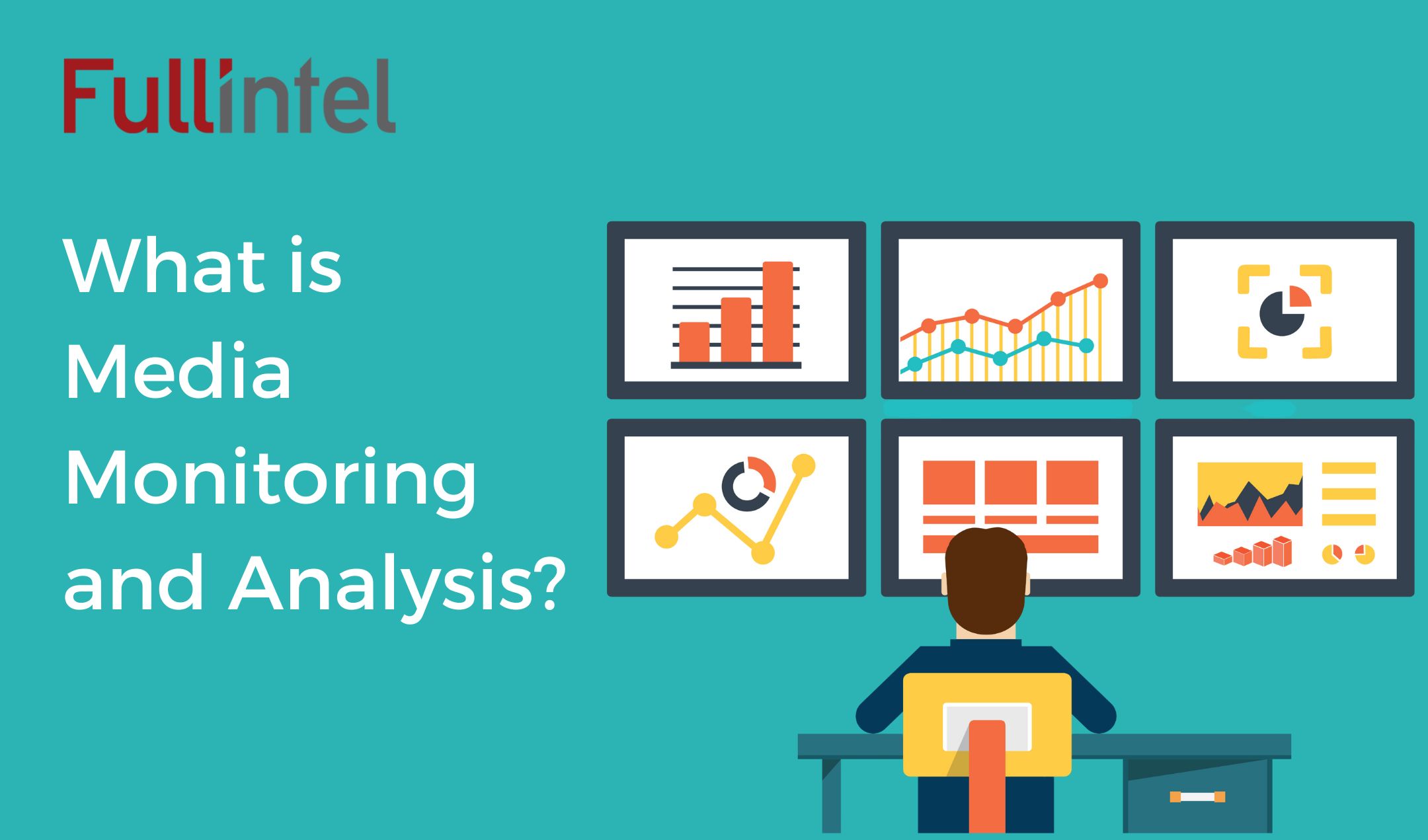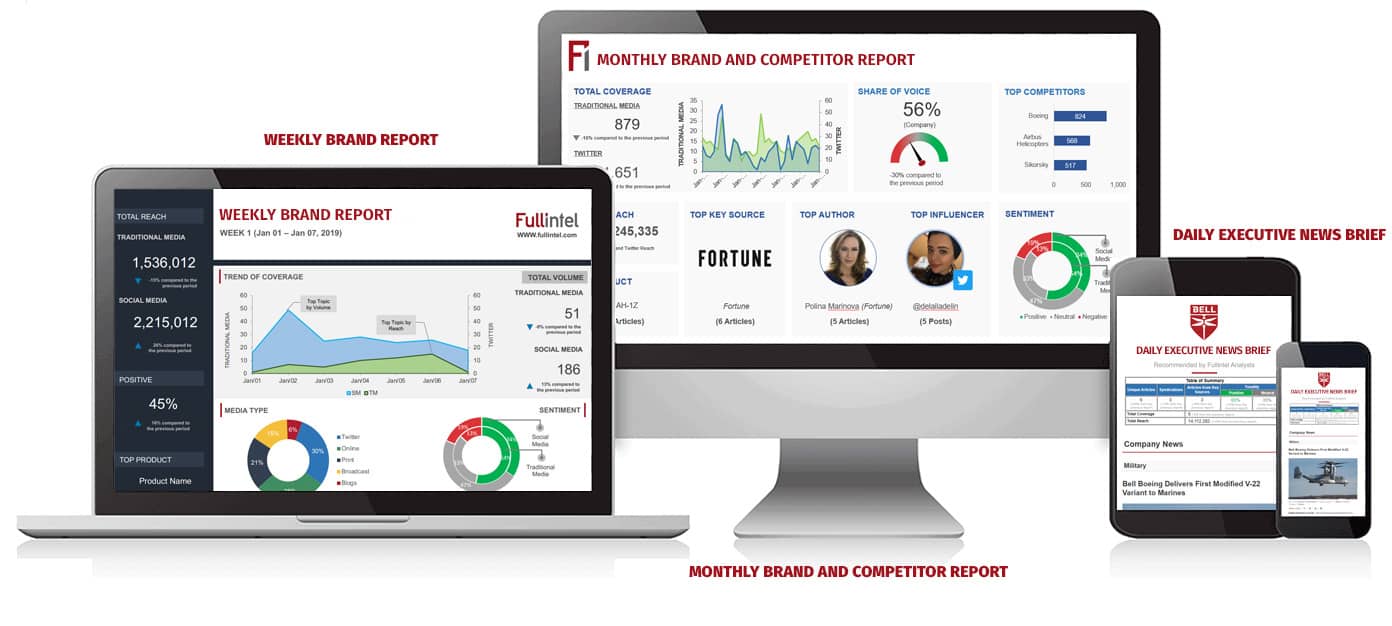The problem?
Along with missing a big story about your most recent ESG campaign, which was covered by a paywalled website, your provider also included several irrelevant results based on keyword strings set up months ago.
Your team now has to scramble to add missed content while removing the bad results – not ideal with an important meeting looming early in the morning.
This is just one of many things that can go wrong when relying on fully automated media monitoring, or when doing it yourself. But before discussing the benefits of human-curated media monitoring and analysis, we need to define what it is in the first place.

What is media monitoring and analysis?
The definition of media monitoring is pretty simple: It’s the ongoing monitoring of print, online, broadcast, or social media (or all four) on behalf of a client entity such as a company, association or government agency.
Media monitoring companies regularly scan media for mentions of a company or organization’s name, important issues, or other relevant items.
Most media monitoring companies offer daily reporting or executive news briefings as a staple product. These are high-level news and social listening summaries with embedded images, links, descriptions, and other info, usually delivered by email or mobile app. They also typically offer media analysis services, which provide insights based on the data generated by all that media monitoring.
Crisis monitoring – which is a type of media monitoring – is more of an as-needed activity, as potential issues arise for an organization. In crisis monitoring, organizations monitor relevant brand mentions during times of crisis to stay on top of developing issues, and may receive more frequent briefings and updates to stay on top of events in real time.
Media analysis, on the other hand, is the practice of evaluating news and social media using quantitative and qualitative methods to discover trends and other insights. It’s often used for reputation management. Analysis regularly uncovers valuable media intelligence around who is talking about your brand, what they’re saying, and whether it’s positive or negative towards you and your products or services.
Monitoring and analysis are sometimes done in-house by communications or marketing groups, but this can be a time-consuming and sometimes frustrating process that leaves teams stretched too thin.
More often these activities are farmed out to third-party services and software platforms that essentially become an extension of a company’s communications team.
PR agencies also sometimes offer these services as add-ons to their core business, although in some cases agencies end up white labeling reports created by other firms.
What should I expect in a media analysis report?
Good media analysis reports typically include some combination of qualitative and quantitative analysis. Media analysis reports are usually a mixture of tables, charts, and other numerical data, with brief text observations alongside to provide context and insights around the numbers.

Metrics used in media analysis depend largely on the client’s goals, but some of the most common include:
- Coverage over time (coverage trend)
- Circulation/reach
- Sentiment (tone)
- Share of voice
- Top journalists
- Top outlets
- Top regions
- Top competitors
- Top spokespeople
- Top key sources
Metrics are measured either at one point in time or over a longer period of time, or both. Metrics can also be combined, such as a chart showing top outlets in each region cross-referenced by sentiment.
Fullintel’s media analysis team uses these and other metrics, such as our Media Impact Score, a proprietary metric based on AMEC measurement standards. The Media Impact Score takes into account multiple factors – from sentiment, to prominence, to key messages – to apply an easy-to-understand score to individual articles that can then be extrapolated to evaluate entire campaigns and issues.
Media monitoring (and analysis) – a brief history
Even though most media monitoring services are software-as-a-service (SaaS) platforms today, it hasn’t always been this way:
1852: The first known press clippings agency is founded in London, and is frequented by several well-known actors, musicians, and artists who browse its stock for mentions of themselves or their affiliations.
1879: A similar service is founded in Paris, but with a twist: the L’Argus de la presse, as it was called, offered a full-blown clippings service where artists could buy individual review clippings instead of the whole newspaper.
1888: Burrelle’s Press Clippings Bureau forms in New York City, after the founder overheard two business people complaining about the difficulties of keeping up with the news.
1940s: Eastern European governments in postwar Europe obsessively monitor letters-to-the-editor sections in newspapers, measuring sentiment towards the regime and analyzing the content to determine the most popular issues or subjects.
1960s: The emerging (and wildly popular) mediums of radio and television make their first appearances at press clippings agencies, who offer to monitor broadcasts and transcribe them if they prove relevant for clients.
1990s: The process of monitoring press clippings or media monitoring – which hadn’t changed much in years and largely involved paper, scissors and a clipbook – goes digital, bringing in online news sources and experimenting with software-as-a-service delivery.
2000s: Completely automated media monitoring services make an appearance, to much fanfare. But clients soon discover that without human curation, these services often create as much – or more – work than they save by sometimes missing important hits and often inundating users with irrelevant clips.
What’s the difference between automated and human curated media monitoring and analysis?
As far as media monitoring and analysis are concerned, there are three broad methods:
- 100% manual. Completely manual media monitoring using scissors, glue and a clipbook is practically extinct (although not totally), but manual media monitoring lives on for some small entities who use free tools to track a handful of mentions per year. Fully manual media analysis without some kind of computer assistance is basically nonexistent.
- 100% automated. This method of media monitoring relies on pre-programmed Boolean keyword strings to automatically search and harvest content using software. Automated media analysis uses keywords combined with an automated report generator. It’s fast, but often produces bad results. This method is especially prone to missing important items and including irrelevant content.
- Partly automated with human curation. A combination of automated processes and expert human oversight, this method typically gleans the best results by automating processes that make sense and imposing a human touch where required. This kind of media analysis reporting, for example, typically relies on semi-automated number crunching and chart generation with human qualitative analysis.
For organizations who only receive a small number of mentions each year, or who have a high tolerance for media briefings and analysis that contain missing or irrelevant information, it’s possible that fully automated monitoring and analysis is good enough.
But most PR and communications professionals agree that fully automated media monitoring and analysis almost always creates more work than it solves. Fully automated media monitoring often results in irrelevant, redundant, or repetitive hits, and misses other important items hidden behind paywalls or other sign-in requirements.
Fully automated media analysis can be equally troublesome. Data-driven decisions are good, but not if they’re driven by bad data. If the irrelevant hits served up by your monitoring provider make it into your automatically generated quarterly or annual media analysis, you’re basing decisions on bad information.
The advantage of Fullintel’s human-driven media monitoring and analysis
The best media monitoring and analysis combines technology, people and process – using automation where it makes sense, with all monitoring and reporting services managed by dedicated media experts.
These experts are knowledgeable with your account because they constantly monitor and curate your organization’s media hits, leading to more accurate results; complete content coverage including paywalled, niche and subscription outlets; and less time wasted by your team chasing or filtering results in your daily briefings or analysis reports.
Human media monitoring specialists are also better at acquiring content from more advanced media sources not available in SaaS platforms – such as LinkedIn – than automated scripts.
This process provides PR and communications teams with far greater confidence in the results contained in their daily briefings and media analysis reports. After all, just one or two mistakes – especially if they involve syndicated coverage – can sometimes lead to skewed results, and – by extension – uncomfortable meetings with senior executives.
Frequently asked questions
What is media monitoring?
Media monitoring tracks relevant activity about a topic, keyword, individual, or brand on selected traditional media channels, including broadcast (TV and radio), print, and online news, and social media channels (such as Twitter, Facebook, and LinkedIn). It is often performed using third-party media monitoring and analysis tools. These tools can include media monitoring software that harvest news content automatically based on predefined keywords, automated sentiment analysis, and mechanisms to aid with manual content curation.
What is social media monitoring?
Social media monitoring tracks relevant activity about a topic, keyword, individual, or brand on selected social media channels. It is typically either performed automatically via a SaaS tool (which uses pre-populated keywords to search for and harvest content), manually via a media analyst, or through a combination of these approaches. Social media monitoring can include real-time monitoring or historic monitoring of past content. Social media monitoring is typically performed daily, so organizations can stay abreast of relevant conversations and the activity of important social media influencers, and is often combined with social media analytics.
Which of the following processes is used in social media monitoring?
A comprehensive social media monitoring program combines automated and manual monitoring to capture content from social media channels not included in SaaS-only monitoring platforms. Other social media monitoring processes include influencer, topic, and hashtag research; expert curation to filter out noise and irrelevant content; real-time campaign monitoring and evaluation; and real-time responses to ongoing social media conversations around your brand. The best social media monitoring combines social and traditional media data points to provide the fullest possible picture.


